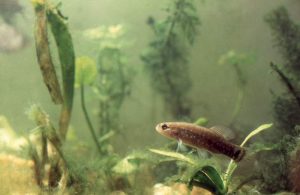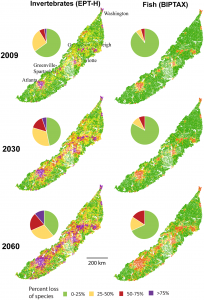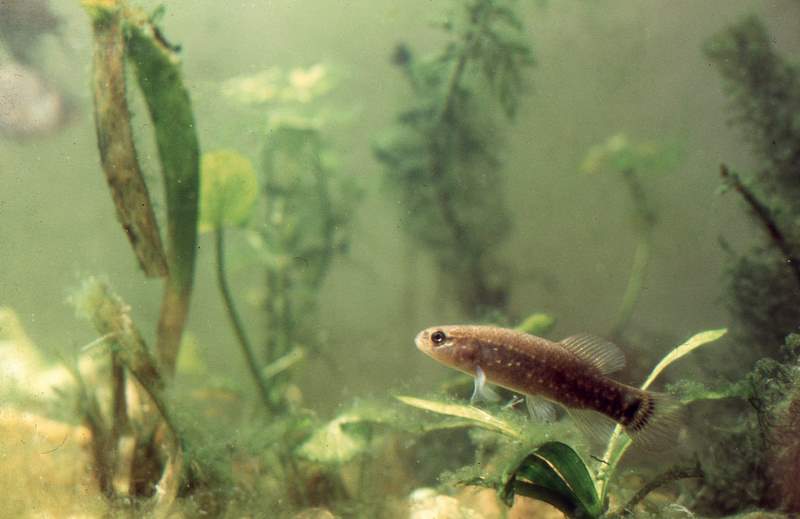The U.S. Geological Survey (USGS) has released the results of a new study highlighting a looming threat to vulnerable marine life in the coming decades: urbanization.

The southeastern U.S. contains many aquatic species found nowhere else on the planet. If current trends of urbanization continue in the region, a new study estimates that fish and invertebrate species in about 13,800 additional km (8,600 additional mi) of streams will face life-threatening water quality conditions by 2060. Photo: Hunter Desportes/Flickr
In the Piedmont region, which stretches from southern New York to central Alabama, the urban coverage of cities such as Washington, D.C., and Atlanta is expected to nearly triple by 2060. Assuming current development patterns do not change, the region’s additional urban sprawl and subsequent increase in runoff generation may endanger an alarming proportion of freshwater invertebrates, fish, and other organisms, USGS researchers predict.
Small streams in the southeastern U.S. contain several species of fish found nowhere else on the planet. For the Carolina pygmy sunfish, the brook trout, the Cape Fear shiner, and dozens of others, the difference between survival and extinction depends on the health of the freshwater invertebrates on which they feed.
“This study provides a warning of how extensive stream degradation from urban development could be by mid-century,” lead study author Peter Van Metre, a USGS research hydrologist, said in a news release. “The study also identifies specific urban stressors responsible for species loss – useful information for devising mitigation strategies.”
A region on the grow
USGS researchers combined two previously established data sets to create a model capable of estimating the effects of future land development on the biodiversity of 75 small streams in the southeastern U.S.
Adam Terando, a North Carolina-based USGS research ecologist, led a study in 2014 that predicted changes in Piedmont-region urbanization over the next 50 years. Examining growth trends in Atlanta and Washington as well as in three metropolitan areas in North and South Carolina, Terando’s research team estimated that urban area coverage in the Piedmont region may increase by as much as 165% by 2060; from about 17,800 km2 (6,900 mi2) today to 47,500 km2 (18,300 mi2) by mid-century.
Poring over Terando’s predictions on a pixel-by-pixel basis, the model developed by Van Metre and his colleagues also incorporated data from the 2014 USGS Regional Stream Quality Assessment. The assessment provides baseline information about the physical, chemical, and biological health of Piedmont streams and also gauges the effects of nutrients, pesticides, pharmaceuticals, and other indicators of urban activity on local water quality.
Tying conclusions from the two models together not only illustrated the potential level of disruption to biodiversity from increased urbanization, but also the degree of habitat degradation already underway from the Piedmont region’s boom in city-dwellers over the last several decades.
Larger cities, fewer fish
According to the new USGS model, when 50% of a specific watershed is urbanized, about half of sensitive invertebrate species and about one-third of the fish that survive by eating those invertebrates will be lost.

Some areas in the Piedmont region, which stretches from southern New York to central Alabama, may face losses of freshwater invertebrate species of up to 75% or more by 2060, according to a new model of urbanization and water quality. This loss would have drastic effects up the food chain, imperiling several fish species unique to the region. Photo: U.S. Geological Survey.
As of 2009, only about 8% of small streams in the Piedmont region were surrounded by 50% or more urban coverage. By 2060, the model predicts that proportion to rise to about 25%, placing fish and invertebrates in an additional 13,800 km (8,600 mi) of streams at risk.
A vast majority of streams in the Piedmont region will feel considerable effects from future urbanization, the researchers predict. Approximately 38% of small streams currently run through watersheds with at least 5% of urban land cover. That figure may increase to as much as 62% by 2060, the model finds.
Importantly, these findings assume that current patterns of land use and development, the environmental hazards associated with pesticides, and stream alteration will remain the same several decades into the future. The model also does not consider non-urban development, such as clearing a forest to make way for manmade wetlands, which could have a positive effect on water quality.
Read USGS’ full, open-access study, titled “Projected urban growth in the southeastern USA puts small streams at risk,” in the journal PLOS One.





